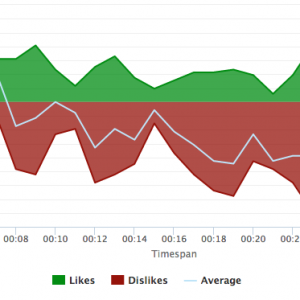The Ultimate Guide to Advertising Research
Advertising research is a type of market research that focuses on determining which advertisements will be most effective with current and new customers. It accomplishes this by conducting extensive research before a campaign and analyzing the campaign’s success.
The goal of ad research is to gain a deeper understanding of your clients and their motivations so that you can create better advertising that shows why your product satisfies their needs. An analysis of the campaign will inform you how successful the campaign was and help you iterate your efforts to continue improving results after having a good grasp of the people you’re targeting.
Conducting pre-campaign advertising research
Understanding your target audience is the goal of pre-campaign advertising research. Prospects and consumers will be divided into various groups. The study should reveal the different market segments so that your marketing can be targeted at specific groups.
- Surveys
Online surveys, which can be readily created using Survey Monkey, are one of the most effective ways to learn more about your clients. This allows you to ask particular questions, albeit you should examine response bias and the questions you ask carefully.
- Google Analytics
Analytics can tell you a lot more than just how much traffic you’re getting. The Audience tab displays demographics, geography, and interests.
- Keyword research
The cornerstone of SEO is conducting internet keyword research, but it also shows you what consumers are interested in and the proportionate level of interest. It also aids in revealing the language utilized to discuss these topics.
- Social intelligence
You’ll need a good social listening platform to make the most of social media and turn millions of organic discussions into a large focus group. Search for mentions of your business and items to begin your quick audience research. Then you may look at the information that’s already there about these people.
There is no further work for you because all mentions are marked up with gender, occupation, location, and hobbies as they are crawled. More detailed insights can be uncovered with a bit of manual labor. Building a panel of people who have referenced your brand or sector is one technique. After you’ve tagged the mentions, you may dig further and cross the various categories and tags to learn more about your target audience.
- Q&A sites
Questions and crowdsourced responses on a wide range of topics, including brand conversations, may be found on sites like Quora. These sites can offer you an idea of what people are asking and worrying about your service or product.
- Competitor analysis
Examining your competitors’ websites and social media accounts might help you learn more about customers who are shopping in your vertical but aren’t buying from your company. Instead of hating them, try to persuade them to join your side.
- Google Trends and Consumer Barometer
Google Trends can help you figure out if a topic is gaining or losing popularity. Although the questions are confined to consumer online behavior, the Consumer Barometer allows you to create interactive charts with various filters applied.
Conducting post-campaign advertising research
Campaign analysis is a straightforward task for a social intelligence platform. By integrating it with other data, you can get a clear image of how well your campaign performs. Open rates and click-through rates will be reported by email automation software. You might compare this to past efforts or consult market research.
Social intelligence can assist in deciphering several critical campaign data and gaining a better grasp of the campaign’s impact. You can look at what has changed in response to the campaign using your prior advertising research.
- Volume of mentions
The volume of mentions is a simple indicator that will tell you whether your campaign has boosted brand awareness and generated conversation about it. Because most brand conversations take place outside of owned channels or with mentions that aren’t tagged with the brand, social intelligence is the only method to capture all of the dialogue surrounding your campaign.
- Share of voice
While you may notice an increase in the number of mentions throughout the web, you should compare this to your competitors to see how your share of voice has increased in contrast to theirs. You may also split down the share of voice to discover who is winning a specific sector.
- Reach
The number of people who will see those mentions is referred to as reach. It considers the number of followers that each author who mentions you have. A celebrity or influencer in your campaign is likely to reach a significantly larger audience.
- Engagement
How many people responded to your campaign after seeing it? This can provide you with an estimate of the number of people who participated in the campaign. Even if they didn’t visit your site, these people are more likely to remember it.
- News coverage
Understanding how many media mentions you received and categorizing them into different tiered outlets will be a part of your campaign analysis. You won’t miss any references with social intelligence, and organizing the publications will be a breeze.
Mentions are automatically classified based on the type of site. This allows you to go over the news mentions and report on the most popular sources that have covered your campaign.
- Brand associations
You can find the attributes that people identify with your brand or product by setting rules that segment mentions of your brand that include adjectives. Monitoring these over time might demonstrate how your marketing has changed people’s views and associations.
- Sentiment and emotional response
Because a solid social intelligence platform will have sentiment analysis built-in, you can quickly monitor for favorable or unfavorable responses to your campaign. You may use this to get a sense of public opinion, and you can categorize mentions to see how sentiment shifts in response to the brand, products, or campaign.
Conclusion
The most excellent way to ensure success is to conduct research before your campaign and measure the impact of your advertising. Knowing who you’re marketing at will help you create a campaign that will resonate with them and their needs. The fine-tuning that will make your marketing efforts genuinely shine is measuring and refining your efforts.








